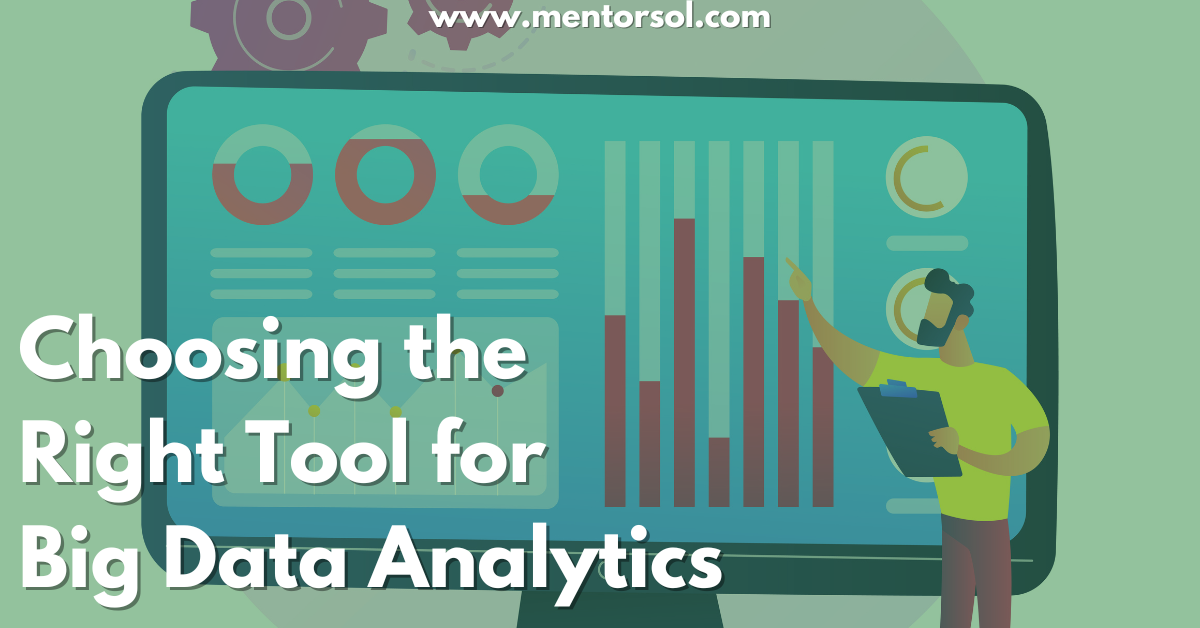Big data analytics has become a cornerstone of decision-making in businesses worldwide. With vast amounts of data generated daily, organizations need robust tools to analyze this information, uncover trends, and gain actionable insights. However, choosing the right tool for big data analytics can be challenging, given the multitude of options available. This article will guide you through the essential factors to consider when selecting the best analytics tools for your needs.
Understanding Big Data Analytics
Big data analytics refers to examining large datasets to discover patterns, correlations, and insights that aid decision-making. These datasets are often complex, unstructured, and generated at high velocities. To make sense of this data, businesses turn to specialized tools that help manage, process, and analyze it efficiently.
Key Factors to Consider When Choosing a Tool
1. Scalability
The amount of data businesses generate is constantly growing. A tool you select today should be able to handle not only your current data load but also scale as your data grows. Scalability ensures that you won’t have to switch tools as your business expands, saving time and resources. Cloud-based solutions like AWS, Google BigQuery, and Microsoft Azure are excellent for scalability.
2. Ease of Use
Not all users of big data analytics tools are technical experts. A user-friendly interface can significantly enhance productivity by reducing the learning curve. Tools with intuitive dashboards and visualizations, like Tableau or Power BI, empower users to extract insights without needing extensive coding knowledge.
3. Performance and Speed
For organizations requiring real-time analytics, the performance and speed of the tool are crucial. Tools like Apache Spark are designed for high-speed processing and are well-suited for tasks that involve analyzing data in real time. Evaluate your use cases to ensure the tool can meet your performance requirements.
4. Integration Capabilities
Your chosen tool should easily integrate with your existing data sources, software, and systems. Compatibility ensures seamless workflows and eliminates the need for tedious manual data transfers. Tools like Talend and Informatica excel in integration, making it easier to consolidate data from multiple sources.
5. Cost Efficiency
Cost plays a significant role in decision-making. While open-source tools like Hadoop and Apache Kafka may appear cost-effective initially, consider the expenses related to maintenance, infrastructure, and skilled personnel. Compare pricing models of various tools to identify one that aligns with your budget and long-term goals.
Popular Tools for Big Data Analytics
Numerous tools cater to diverse business requirements, and choosing the right one depends on your specific needs. Here’s a look at some widely-used big data analytics tools:
1. Apache Hadoop
Apache Hadoop is an open-source framework ideal for processing large datasets across distributed systems. Its ecosystem includes tools for storage, processing, and analysis, such as HDFS, MapReduce, and YARN. It is particularly suited for batch processing and handling unstructured data.
2. Apache Spark
Known for its speed and versatility, Apache Spark is a powerful tool for in-memory data processing. It supports multiple programming languages like Python, Java, and Scala and is highly effective for real-time data analytics and machine learning applications.
3. Tableau
Tableau is a visualization-focused tool that allows users to create interactive dashboards. Its drag-and-drop interface simplifies complex data analysis, making it accessible to non-technical users. Tableau is ideal for businesses that prioritize data storytelling and insights presentation.
4. Microsoft Power BI
Microsoft Power BI is another user-friendly tool that integrates seamlessly with the Microsoft ecosystem. It offers real-time data visualization and reporting features, making it a popular choice for organizations already using Microsoft Office tools.
5. Google BigQuery
Google BigQuery is a cloud-based analytics tool designed for handling massive datasets with ease. Its serverless architecture eliminates the need for infrastructure management, enabling organizations to focus solely on extracting insights.
Matching Tools to Business Needs
The right tool depends on your organization’s objectives, data complexity, and budget. For instance:
- Startups may prefer cost-effective or free tools like Hadoop.
- Large enterprises with substantial resources might benefit from scalable and performance-driven solutions like Spark or BigQuery.
- Data-driven teams focused on visualization could opt for Tableau or Power BI.
Conclusion
Choosing the right tool for big data analytics is critical to unlocking the full potential of your data. By considering factors like scalability, ease of use, performance, integration capabilities, and cost, businesses can select a solution that meets their unique requirements. Whether you’re handling unstructured data or visualizing trends, the right tool ensures efficient analysis and drives informed decision-making.
Remember, the best solution isn’t always the most expensive or popular—it’s the one that aligns seamlessly with your goals and empowers your team to make data-driven decisions effectively.
